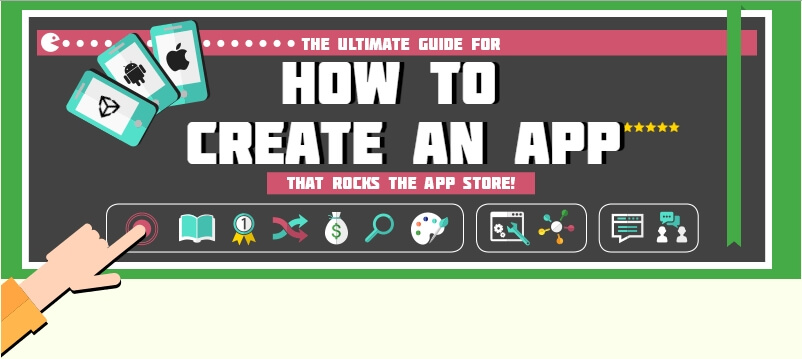

How to
Create an App


How to
Create an App
For some, this is where it starts
getting serious. Making money.
For many of you, this will be the number one reason why you’ve invested so much time, effort, and money
in creating an app.
There are several different monetisation models you can apply to your app. Deciding which one is for you
will be a case of balancing your preferences, the nature of your app, your target demographics’
preferences, and what’s possible.
But it’s absolutely crucial that you choose the right model. Make the wrong decision here and the whole
project could be a complete waste of time and effort. Make the right choice, and you will start to see
the money pouring in quickly and steadily.
There are six main monetisation models for apps: »
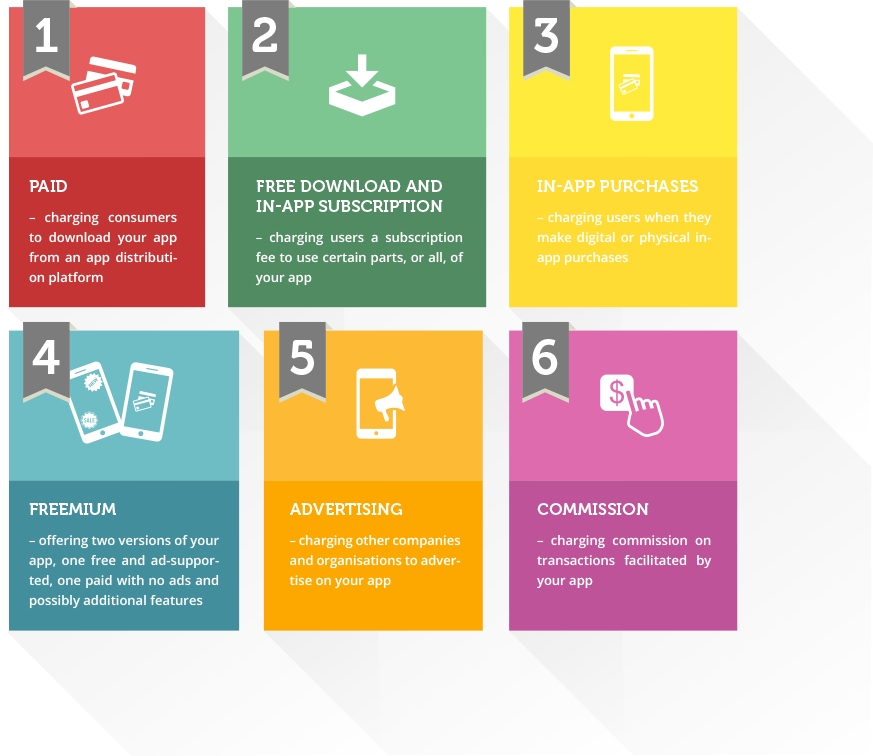
Of course, not all of these models are mutually exclusive, and you’re free to mix and match until you settle on the perfect model for you.
The paid model is probably the most simple monetisation model. Users pay a one off fee so that they’re
able to use your app indefinitely. The amount charged is entirely up to you (however, most app stores
have a cap of $999.99).
As of June 2015, the average app cost $1.13. Such a low price reflects the high
levels of competition in app stores. This means that, in order to cover your development costs and make
profit you have to:
If there’s a free alternative to your app, then it’s likely that that app is going to attract the vast
majority of consumers.
In fact, in 2015, the 68.8 percent of all Android apps downloaded were free. And, by 2017, it is
projected that free apps will account for 253.91 billion downloads compared to 14.78 billion paid
downloads. »
The trend is clear: consumers prefer free apps. However, don’t be too disheartened if you really want to
pursue the paid route – 14.78 billion downloads is still a lot of downloads! To make sure your app gets
its fair share of them, you need to make it offer something really special.
Vlambeer, a Dutch development studio consisting of just two people, created Ridiculous Fishing in 2013. The game is completely unique, with interesting artwork and unusual gameplay. Players take control of a fisherman who, after catching fish, blasts them out of the sky as they come out of the water. It’s a strange concept, but the game has near-perfect scores from almost all well-respected reviewing websites, with Metacritic describing its reception as “universal acclaim”. The game justifies its $2.99 price tag with its beautiful design, enthralling gameplay, and unique approach. It has a 4.5 star rating on the Apple App Store from over 8596 reviews.
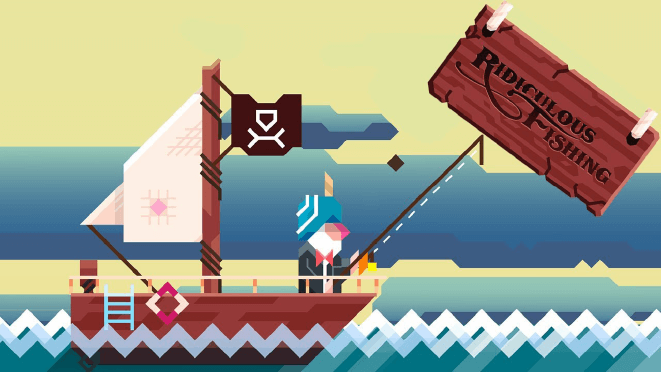
The subscription model bodes well for apps whose value does not diminish over time. Even the most
addictive games can get boring, and dating apps are only effective for as long as their users are
single.
Because of this, subscription is a fairly unpopular monetisation. In 2014 (the most recent statistics
gathered) the subscription model was only used by 6.8 percent of developers.
Barry Nolan, who led and scaled operations, marketing and products for numerous startups, explains in
his
post here about the three different subscription options for developers:
Apps which use one of these subscription models are free to download, with users paying a subscription
to use or view additional features or content.
The model is particularly popular with newsstand and media publications, as well as some software
packages (especially those aimed at businesses).
Free subscriptions can be used as a way to gather important data, such as emails, names, and addresses,
and as such is strictly not a monetisation model.
SiriusXM is a satellite radio provider. Their App, the eponymously named SiriusXM, allows you to
take their programmes with you wherever you go.
Because, by the very nature of radio, the content broadcast will change from day-to-day, the app
justifies its subscription fee with the promise of fresh programmes ad shows.
The SiriusXM app
currently has a 4 star rating from 2790 reviews on the Apple App Store, proving that people are willing
to pay in an ongoing fashion for quality content.
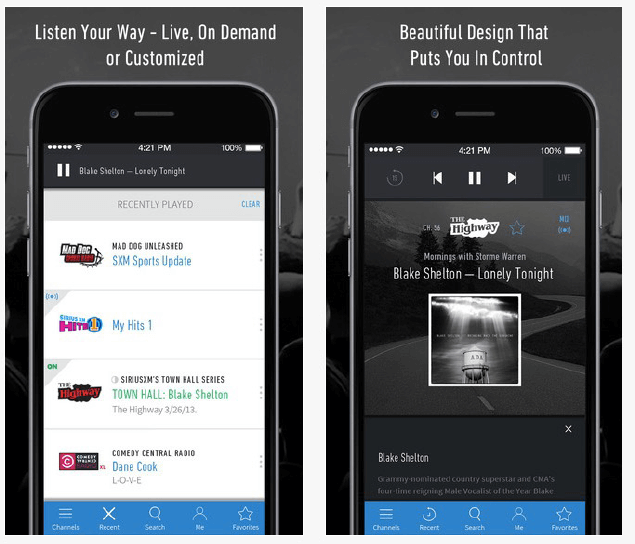
The in-app purchases monetisation model charges users to use specific functions or to buy certain
digital or physical goods.
Games make use of this model very effectively, often charging addicted players to purchase power-ups or
boosters that will give them a competitive advantage, or extra levels to keep them occupied.
But the practice has bled into other app genres – even popular dating app Tinder now gives users the
option to pay for a “super like” (a feature which tells other users that someone has liked them).
Retailers, too, make use of in-app purchases. However, they sell physical rather than digital items –
such as clothes or homeware – with the app simply functioning as another place for people to make a
purchase.
In fact, in-app purchases are
so popular that 49.7 percent of
developers made use of them in
2014.
The popularity of in-app purchases has a lot to do with how easily they can combine with other
monetisation models; paid and free apps can each be loaded up with additional in-app purchasable
features and goods. For this reason, in-app purchases are a great way of bolstering your app’s revenue,
even if it’s not your primary monetisation model.
Peter Molyneux, the game designer famous
for his experimental and wayward ideas, created Curiosity – What’s Inside the Cube as “test about the
psychology of monetisation”.
Players had to click pixels on the surface of a black cube with the aim of reaching the core. At the
centre was a secret prize – which turned out to be a chance for the winner to feature as a god figure in
Molyneux’s next game.
Players lined up to get in on the action, and there were plenty of in-app purchases to help them get on
their way, as Wired covered in their post here. The diamond
chisel was the most expensive, costing £47,000, and increasing a player’s tapping strength by a factor
of 100,000!
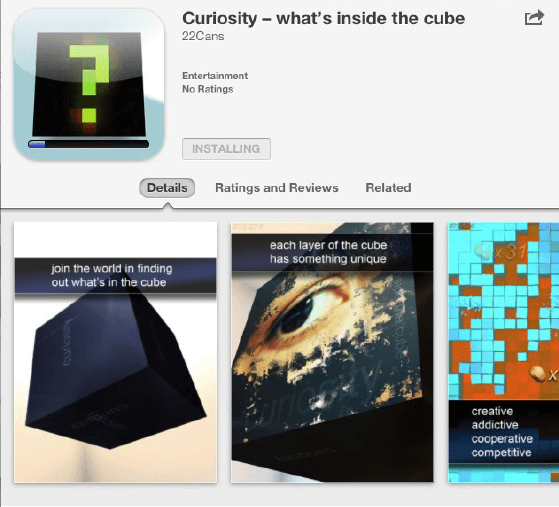
The freemium model is very similar to the in-app purchases model, with users paying for extra
benefit(s).
However, rather than making one-off purchases, the
freemium model encourages users to pay to upgrade the entire app.
Often this includes removing adverts, adding additional functionalities, as well as access to numerous
other benefits (even real-world rewards).
Generally, those seeking to use the freemium model actually create two versions of their app: the free
version and a paid version. The free version is obviously inferior and limited, and this encourages
users to purchase the paid version. In effect, the free version advertises and sells the paid version.
The key is getting users
hooked and wanting more.
Threes! is an indie puzzle game developed by Sirvo. Players slide numbered
tiles on a grid to combine addends and multiples of three. The game is incredibly addictive and has a 92
percent rating on Metacritic.
The game reached the top position on the Apple App Store’s paid chart days after it was released, and
the free version (released shortly after) largely replicated this success.
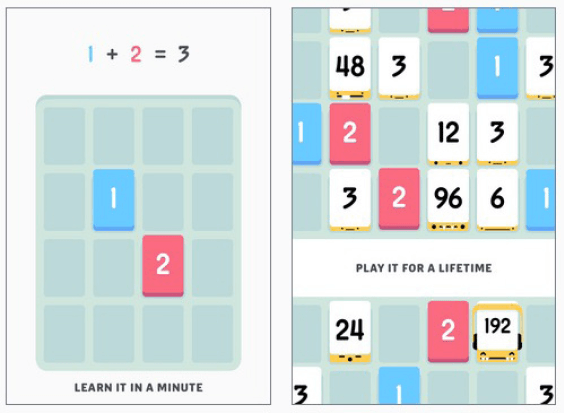
Advertising is the most popular app monetisation model. Users download and use an app (usually for free) and advertisers pay to display adverts to them.
(Percentage of developers using this form of advert) »
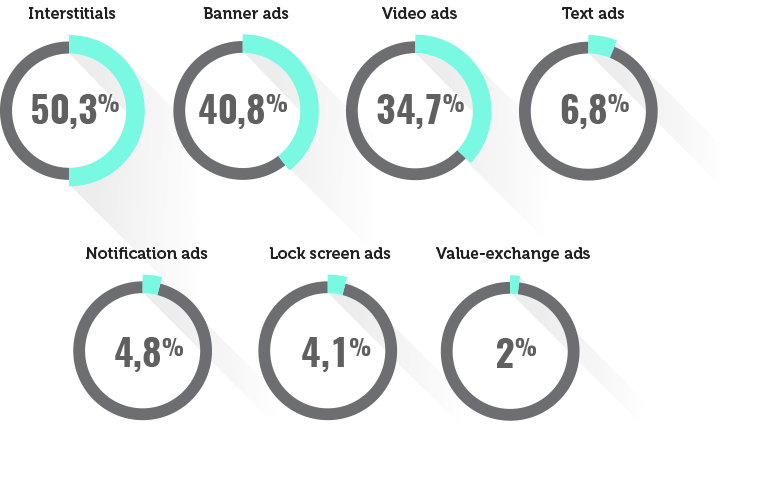
Advertisers will have their own preferences when it comes to the types of Ads you display. And
this means that you have to enable your app to display different types of ads. For example, in the last
year alone, video advertising have jumped by a factor of five, so it’s important that you offer that
capability if you want to attract the most lucrative advertising deals.
At the same time, advertisers will only pay to advertise on popular apps. And too many ads will affect
your
apps usability and, in turn, its popularity; users prefer free apps, but that doesn’t mean they like ads.
For both of these reasons, in order to retain users and please advertisers, it is often a good idea to
diversify ad products with multiple units of different sizes. This should stop users getting disgruntled
at seeing too many ads of the same type.
Polar Bowler 1st Frame is a bowling game in which you knock down the pins with,
well, a polar bear. The game has a 4.5 rating from 744 reviews on the Apple App Store, and is free to
download.
The app generates money using interstitial ads. One of the game’s objectives is to collect crates, and
the app developers give players the chance to collect bonus crates from sponsors. After clicking the
“Bonus Crate from Sponsor” the player views an interstitial ad before receiving their reward. It’s a
great example of using optional interstitials where the player receives a benefit from viewing the ad,
thereby keeping users happy (without them actually spending any money) and advertisers sweet.
The player receives an invitation for a free crate from a sponsor.
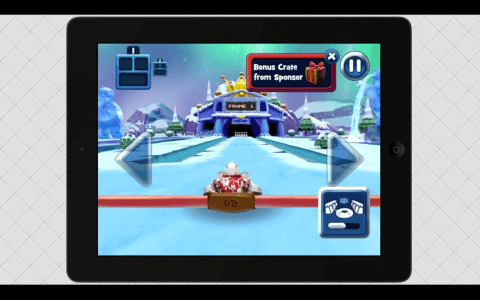
If they decide to click it, they are notified who the sponsor is.
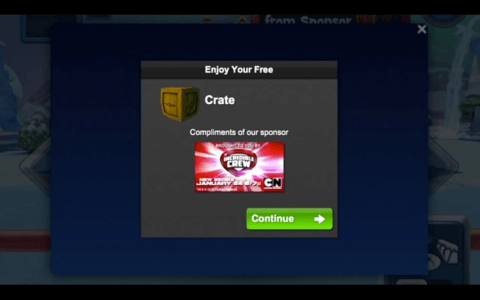
A 30 second advert then plays…and the player receives their prize.
Flashlight turns your device into a torch. It’s an incredibly handy feature, and an incredibly popular
one. The app has a 5 star rating from a whopping 128,493 reviews. That’s pretty good going.
And the app makes its money by displaying ads. Just one unobtrusive banner ad at the top of the display
which doesn’t interfere with the app’s usability at all. But, since it’s so popular, there’s no doubt
Flashlight are charging a premium for it.
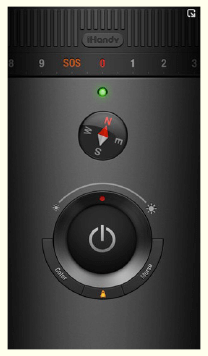
The commission model works on the principle that, if your app facilitates a transaction, you take home a
share of the money generated by that transaction.
The commission model is most popular with (indeed only really appropriate for) marketplaces – apps that
allow third-parties to offer their services or goods through the app.
For example, Just Eat, the fast-food ordering app, allows users to place orders at
any signed-up local takeaways. The app then takes a cut of any orders processed through the site.
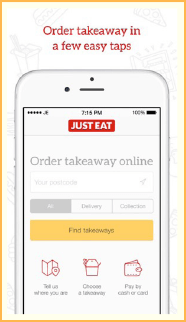
Monetising your app should be the most satisfying part of your journey. Identifying the most appropriate model (or combinations of models) will enable you to achieve the typical end goals: to generate revenues and, ultimately, profit. There are six main monetisation models to consider, which are detailed in this chapter; with
each possessing their own merits depending on the type of app you are taking to market. This chapter has helped you understand their pros and cons so that you can make your decision – it’s a big decision, so read the chapter again if you’re not sure, and do some research on how your competitors are making money too.
But we couldn’t put it any better than Hillel Fuld: